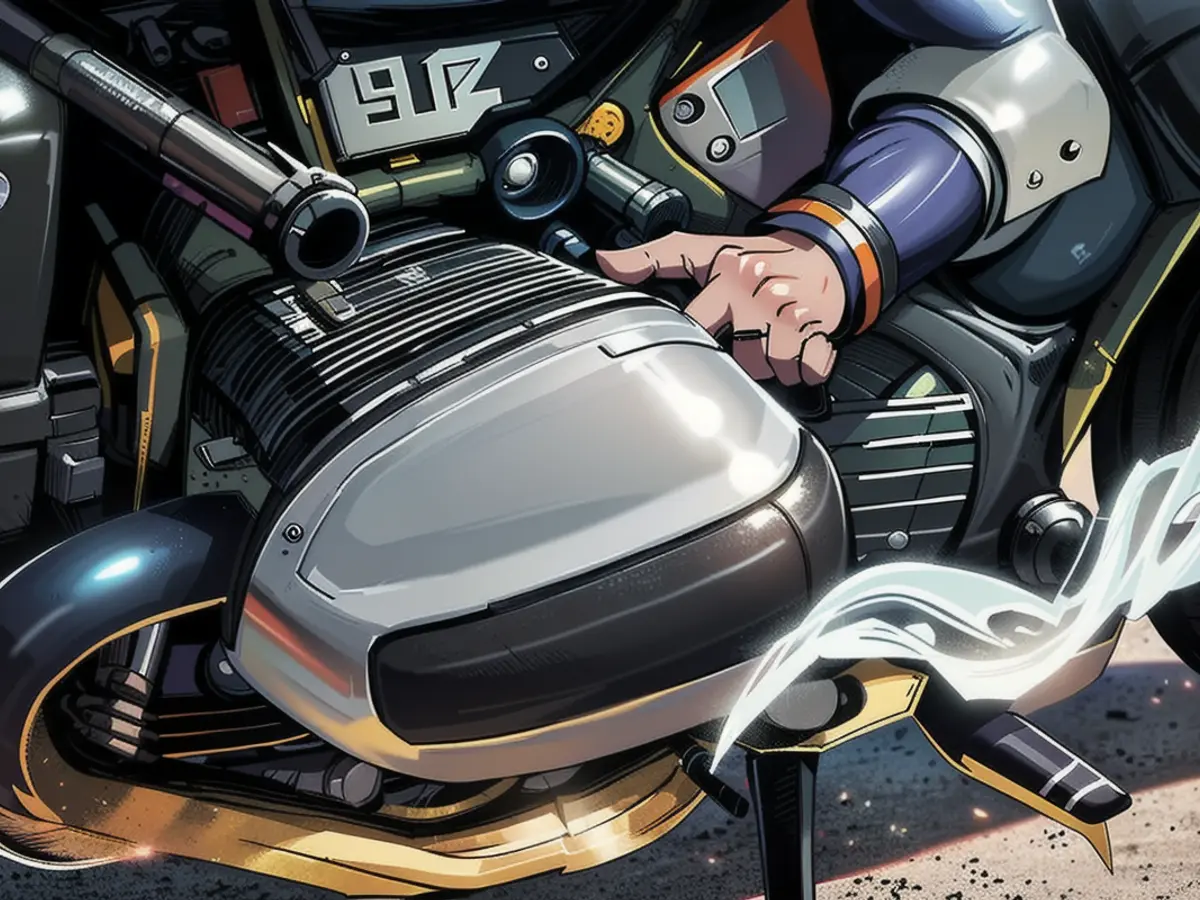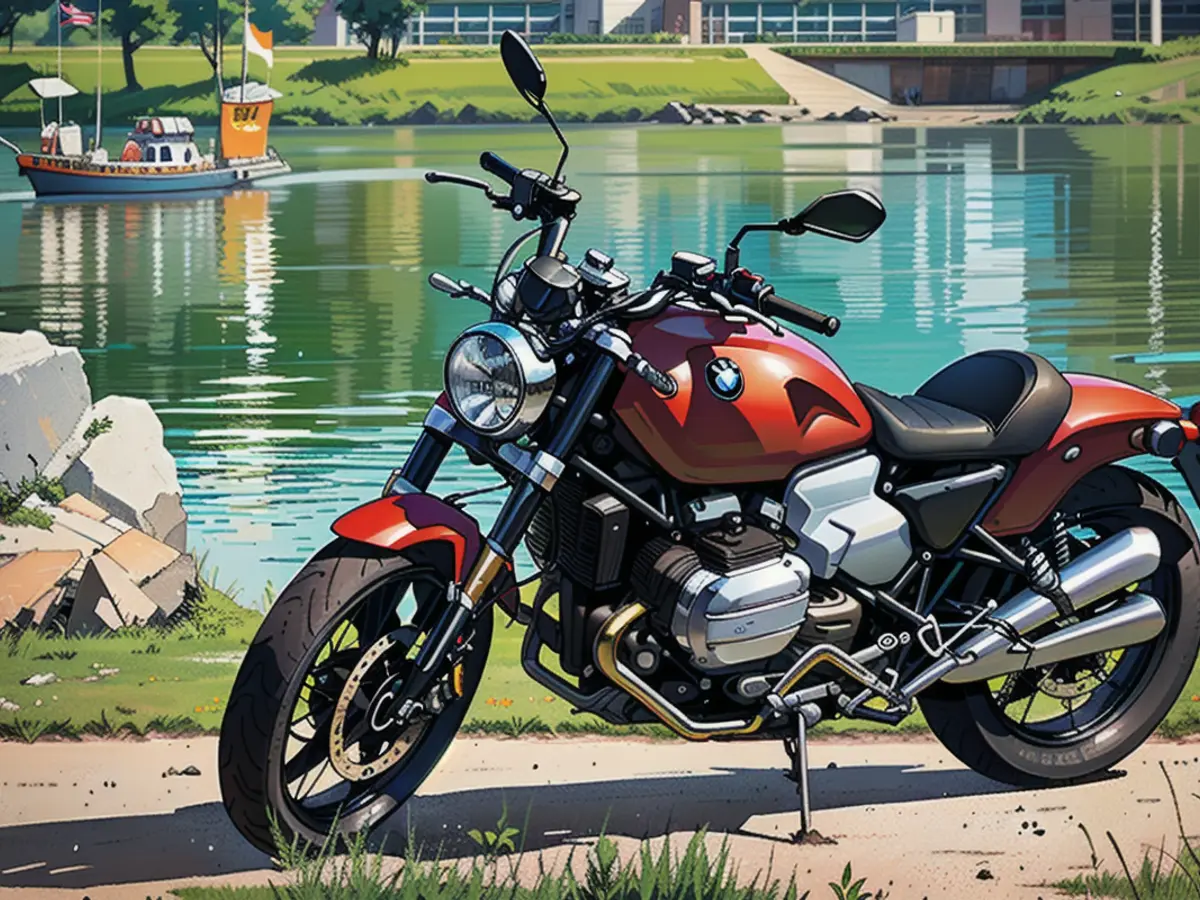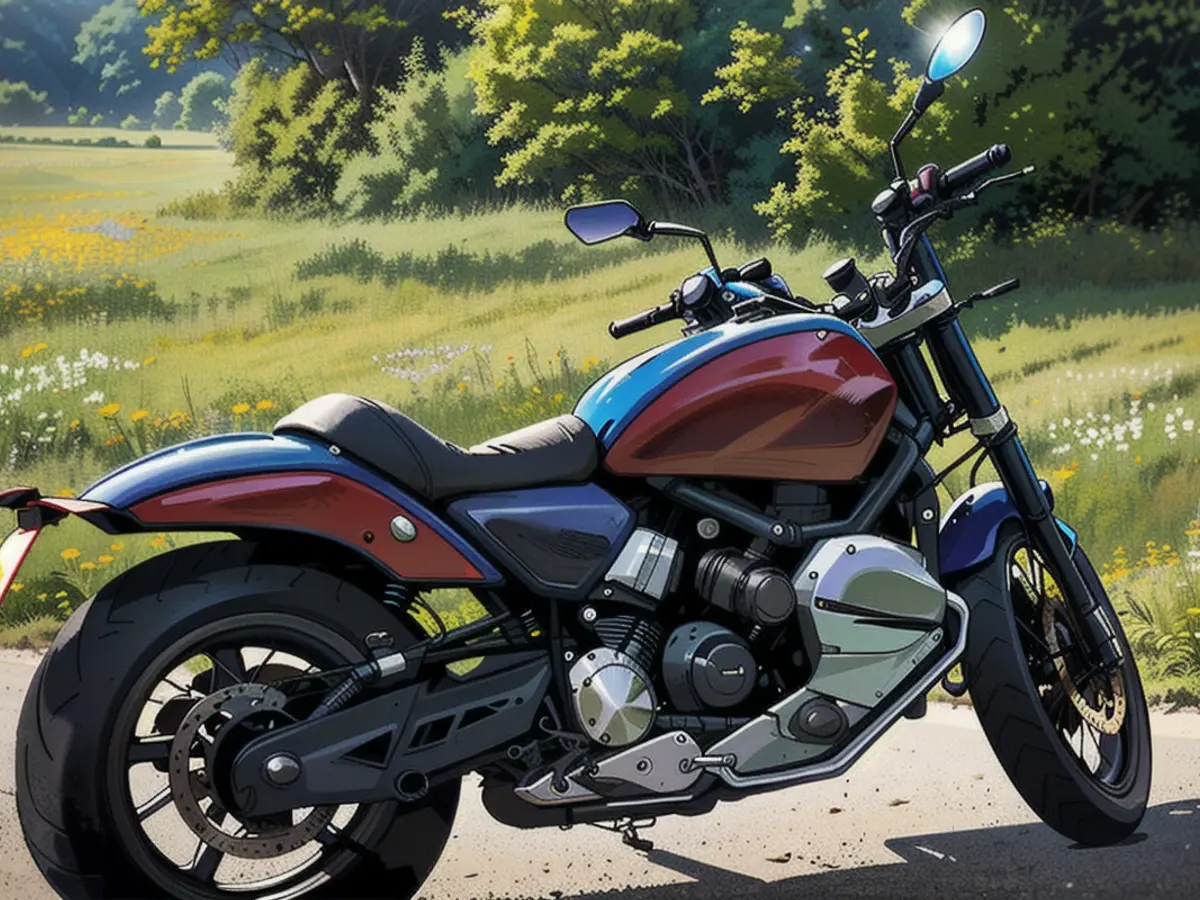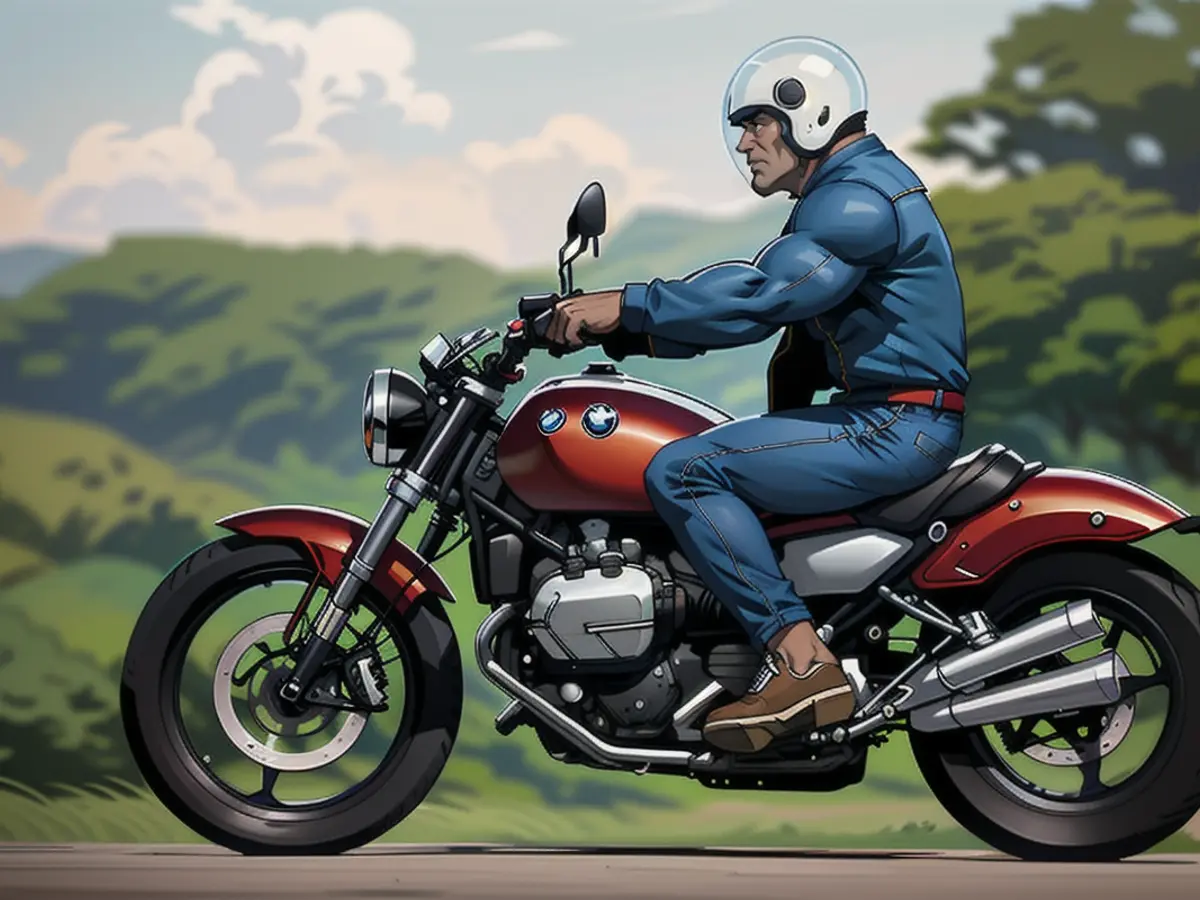Unexpected features in the latest BMW R 12 model.
BMW Motorrad launches the new R 12, a laid-back cruiser for everyday use. Although less popular than the R 12 nineT, it showcases impressive capabilities, as demonstrated in a recent test.
The basic model of the R 12 series is a bit of a wallflower in BMW Motorrad's lineup. This traditional cruiser costs around 14,500 euros and is quite dissimilar to the more expensive and over 3,000 euros more expensive R 12 nineT.
BMW hasn't had the greatest track record with cruisers. Particularly, the R 1200 C, produced from 1997 to 2004, never escaped its tiny niche, despite the powerful Telelever and the rather modest 60 PS boxer engine.
The new R 12 stands out, though, despite sharing a boxer engine with its costlier sibling. It houses a 1,170 cc four-cylinder engine that produces 70 kW/95 PS at 6,500 rpm. while lacking 14 horsepower compared to the otherwise identical engine in the nineT variant, the absence of power is hardly noticeable: Maximum torque is nearly identical to the nineT version (115 Nm), yielding an admirable performance level. And for a classic cruiser, torque is more crucial than sheer power.
The test consumption of 5 liters per 100 kilometers is satisfactory. After 190 cruised kilometers, a refueling notice appears in vivid yellow.
The engine runs smoothly and is thrilling to operate. Power is constantly available at speeds surpassing idling, and the two ride modes are well thought out: The throttle response in "Roll" is mild, while "Rock" is more assertive. In the first mode, you can glide peacefully, while in "Rock," cruiser-typical maneuvers are possible.

The front radial four-piston monoblock calipers are top-notch, and the braking is excellent. The rear brakes, too, are well-sized. The clutch is also well-tuned and simple to operate. It works flawlessly with the precise six-speed gearbox. ABS for curves and dynamic traction control are now standard features.
The suspension is exemplary on the drive side. The same goes for the chassis, though the suspension travel has been reduced from 12 to 9 centimeters in favor of a lower seat height. Only on rare occasions does the shorter suspension travel become noticeable.
The suspension tuning is generally excellent. It is neither sloppy nor instability-inducing. Aside from the footrest touching the ground at some point due to the reduced ground clearance, there is nothing to complain about—even in Munich, it's impossible to achieve a square circle.
The R 12's empty weight is a non-issue, making it easy to handle and capable of navigating tight curves. The tires measure 100/90-19 and 150/80-16, catering to its cruiser reputation.
The standard BMW R 12 rolls out of the factory with a single circular gauge containing both a half-circle dial and a digital display. The design goes hand in hand with the motorcycle's pure appearance. At first, we felt uncertain about the micro-TFT display as an optional accessory but soon warmed up to it as the displays are incredibly clear and uncluttered.

A button on the left handlebar navigates through all possible displays. Only the speed meter is permanently visible. Those who prefer can just display the speed—legislation disallows choosing anything less.
Pure are a host of vehicle features. The headlight, naturally round and now LED, but with an optional cornering light, is the most notable departure from simplicity. The R 12 is factory-fitted without a windscreen. Should you require one, it would cost you extra. Analogously, only when asked will a passenger seat with footrests be installed—the series R 12 is tailored for solo riders.
We find BMW's cutback approach a bit excessive when it comes to "Keyless Ride," which incorporates keyless operation: The steering lock and fuel cap still need the key; however, ignition is keyless. This design feels crude to us.
Otherwise, there's little to fault: The chrome double exhaust pipes of the exhaust system are harmonious and produce a pleasant sound, the mirrors provide a clear image, the seating position is relaxed but not idle, and the ignition process is easy.
In terms of customization options, BMW has gone all out. They cover everything from 719 cast wheels to handlebars, seats, hand levers, turn signal mirrors, unique cylinder heads, and a holder for the smartphone to a silver rear end. Those who delve deep can increase the base price of 14,460 euros to over 23,000 euros.

Verdict
However, one can also have a blast with a "pure" BMW R 12, especially if you're lucky enough to reside in a hilly region with well-developed roads where traffic doesn't encumber you too much. Then, the R 12 truly comes into its own.
Wow, we were caught off guard when BMW included a traditional cruiser in its lineup like the fabled Harley-Davidson Sportster 1200 that has disappeared from their catalog.
Specifications for the BMW R 12:
- Type of motor: A cooled, twin-cylinder four-stroke boxer engine
- Engine size: 1170 cc
- Horsepower: 77 hp (57 kW) at 7250 rpm
- Torque: 86 Nm at 6250 rpm
- Transmission: Six-speed gear change
- Max speed: 180 km/h
- Fuel efficiency: 5.1 liters per 100 km
- Emissions: Euro 5
- Weight: 249 kg
- Seat height: 760 mm
- Fuel tank capacity: 15 liters
- Pricing: Starting at 14,460 euros

Specifications for the BMW R 12:
- Engine: Fan-/oil-cooled boxer twin engine, 4 valves per cylinder, DOHC, 1170 cc displacement, 70 kW/95 PS at 6500 rpm, 110 Nm at 6000 rpm; electronic fuel injection, 6-speed transmission, propeller shaft
- Chassis: Steel tubular frame, engine-supporting; 45 mm upside-down telescopic fork, 90 mm travel; aluminum single-sided swingarm with central pivot rear suspension, adjustable preload, rebound damping, and compression damping, 90 mm travel; aluminum wheels; tires 100/90-19 (front) and 150/80-16 (rear). 31 cm dual disc brakes front, 26.5 cm single disc brake rear
- Assistance systems: Curve-ABS, active traction control DTC, engine drag torque control MSR, two driving modes ("Roll", "Rock"), automatic turn signal adjustment, keyless ride (without steering lock and fuel cap); ABS, shift assistant, hill start assist, cruise control, smartphone integration, and headlight pro with adaptive cornering light
- Dimensions and weights: Wheelbase 1.52 m, width 83 cm, seat height 75.4 cm, curb weight 227 kg, payload 203 kg; fuel tank capacity 14 l
- Performance: O to 100 km/h in 3.9 seconds, top speed over 200 km/h. Fuel consumption according to standard 5.1 liters/100 km, fuel consumption in test 5.0 liters/100 km; range around 275 km
- Colors: Black, Red, Silver Metallic-Black-Gold (Thorium)
- Pricing: Starting at 14,460 Euros
Read also:
The new BMW R 12, despite being less popular than the R 12 nineT, offers impressive capabilities as demonstrated in a recent motorcycle test. BMW Motorrad's latest R 12 model is available in various BMW Motorcycle models, showcasing a 1,170 cc four-cylinder engine that produces 70 kW/95 PS, which is slightly less powerful than its costlier sibling, the R 12 nineT, yet delivers nearly identical maximum torque.








